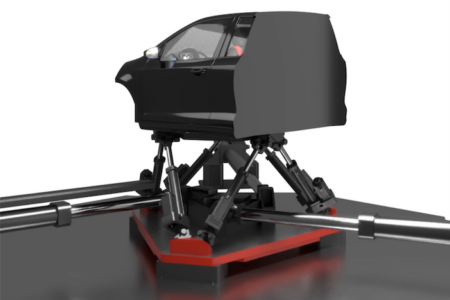Cruden has supplied a driving simulator to Hyundai Mobis’ North America Technical Center in Michigan. The technology will play a role in the automotive component producer’s development of Departed Driver Rescue and Exit Maneuver (DDREM) technology.
DDREM is an autonomous safety function that detects when the driver departs from controlling the vehicle and then reduces the risk of a crash by taking control of the vehicle and guiding it to safety. Hyundai Mobis estimates that in North America alone approximately 7,000 fatalities are caused every year by drivers falling asleep, suffering a heart attack, or experiencing other health conditions that suddenly prevent their operation of the vehicle. DDREM is hoped to eliminate more than 90% of such accidents. The Cruden simulator will be used to test fatigued driver behavior, which the company says would not be feasible or safe in a real car.
“With the evolution of autonomous and next-generation ADAS technologies, the industry is going through significant changes which require the development of new techniques and strategies for handling these human machine interface (HIM) intensive domains,” stated Jay R Gromaski, senior manager of autonomous test & simulation development at Mobis. “Where in the past, traditional means of development and verification would suffice, now they are becoming obsolete. Advancements in simulation will help support these changes in the environment
According to Mobis, DDREM is less complex than service-based autonomous systems, simpler to verify, and has significantly lower cost, meaning it is likely to go into production far sooner. The simulation technology will be applied in the of development of the DDREM concept, enabling engineers to test the technology’s interaction methods with the driver and evaluate algorithms and strategies. The simulator will make it possible to conduct tests with realistic vehicle dynamics, repeatability and safety.





